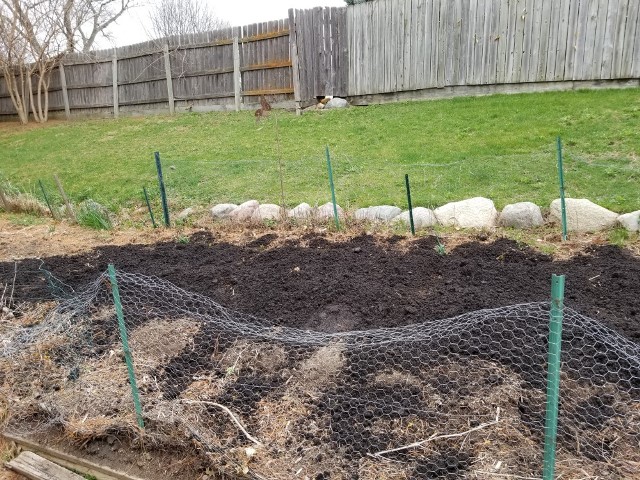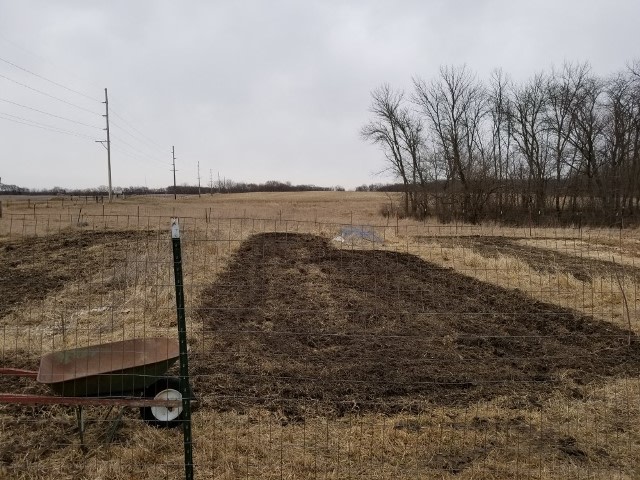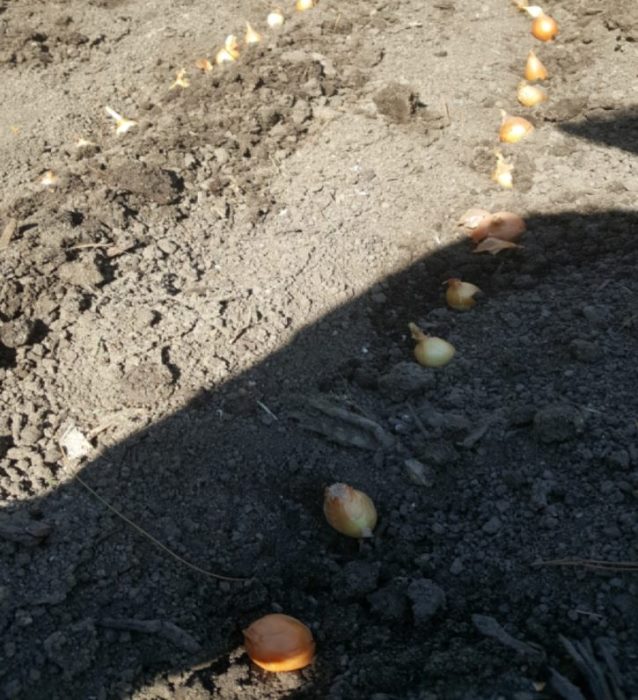Many of us have fruit and vegetable seeds in our preps. Sometimes it can be hard in the blustery spring to figure out a plan for how to turn those into a functioning, food producing garden. But if you’re planning a SHTF garden, you need to start it BEFORE SHTF.
by Farmer Jennie, contributing writer and farmer
My Top Tips for Starting a Garden Before SHTF
Location is everything. If you are starting a garden, the location you place it will determine its success. If you want a salsa garden, full of peppers and tomatoes, and you place it in a soggy shaded spot, you will be sorely disappointed. Find the sunniest spot you can, near some water access. Bonus points if there are windbreaks against prevailing winds and little to no slope.
Treat the location well. Remove any grass by tilling, solarizing, or spraying herbicide. Add in a bunch of compost if you’ve got it. Add in some aged manure if you can find it. Mulch the paths and edges with wood chips, cardboard, or straw.

Grow What You Eat. Eat What You Grow.
Stolen shamelessly from one of my favorite writers, Sharon Astyk, it’s great advice. Look through the seeds available to you. Find the foods that you can immediately connect to dishes your family eats. Pull those seeds out. Think about how often you eat the dishes, and how much of the vegetable you would need to make each dish. Then do some rough calculations for how many pounds of that vegetable you could reasonably consume.
If you only need 15 pounds of tomatoes, stick to a few vines. But if you need 150 pounds of tomatoes, plant 50 vines. If you only eat 1 cucumber a week, don’t plant 4 cucumber hills, just plant one. I know I need to harvest 100 garlic bulbs for my family to get through a year. We go through 2 bulbs a week pretty steady.
Calculate the Size of Your Garden
Once you have a feel for how many plants you’ll be growing, you can calculate the size of the plot you’ll need. Tomatoes need a couple feet of space, lettuce needs 6 inches, some things can go vertical. I find graph paper is quite helpful. I find it helpful to think in terms of row feet for things like peas and beans. That quickly corresponds to numbers of seeds you have (or need to acquire) and to the amount of support/fencing you’ll have to put up for them to grow on.
Related: What is the Best Victory Garden Size for You?

Grow Them How They Want
Grow the heat-loving plants in mid summer and the cool-hardy plants in spring/fall. Learning the swing of that rhythm is part of what it means to know a place and shelter there. Learn your first and last frost dates, then learn how quickly your spot swings in and out of the cold times. You don’t wait till a time of food scarcity to start practicing these dance steps.
Let’s say times are less than ideal and you are uncertain of the severity of your spring storms and the veracity of the published frost dates. Your best bet in that case is to plant a succession of plantings. Plant your green beans in waves, with the first one starting at the date you think you can, and then another a week later, and maybe a third a week after that. That way a late frost maybe only kills half or a third of your crop because the other 2/3 are still under ground germinating.
Be Attentive to the Vegetables
Your vegetables will often tell you what they need. Drooping leaves when water is too scarce. Discoloration when nutrients are lacking. Pests in their pre-problematic-states. Most of the problems are small as they start and can be easily taken care of. It’s when you let things go unaddressed that the problems pile up.
I pick a lot of pests off by hand. I toss them to the chickens, who love that shit. Throw them into a bucket of soapy water if you don’t have chickens. I knew someone who used to take a day’s worth of pickings and blend them in the blender GROSS! Then they spray it back around the garden as a deterrent! GROSS! I can’t vouch for that, but maybe it made her feel better.
Related: 24 Must-Have Victory Garden Vegetables
I do a lot of watering. Vegetable plants are thirsty plants. A full-grown tomato plant can suck up a gallon of water on a hot day. And it can be eaten by a tomato hornworm caterpillar in just a few of those days.
Weed!
If you honestly want to harvest food from a SHTF garden, you HAVE to keep weeds down. And spraying a bunch of herbicide around your food is probably a quick way to get cancer. There are some cool paper-based mulches out there, if you want to spring for a big roll of some of that. Get the heavier stuff, as the light stuff won’t last a whole season. I use a lot of straw to keep weed pressure down. Mechanical weeding is another strategy. I also use my hoes and my hands.
There’s no easy way around it. Suck it up, bend over, and pull the weeds. Get a hoe, sharpen the edge and knife those little sun-shading-water-sucking weeds down or your vegetables will never set fruit or get to a good size. If you get them small, they are easier to get. Plus, the ground is still soft from the initial cultivation. In practice, this means you till the bed. Then, for best results, wait a week, let a bunch of weeds germinate, then till again. Then plant your seeds.
In the days right before and right after those seeds germinate, you scrape the baby weeds out. Mark your straight rows, and use a small hoe, and this is easy. Every week or two, until the crop seeds are large enough plants to shade weeds out, go in and scrape the little baby weeds out.
Get out there and get dirty y’all! Start some SHTF garden growing today. Your future you will thank you.


1 comment
allways grow more then you need theres allways wasred bugs and othere things that might hurt your food crope